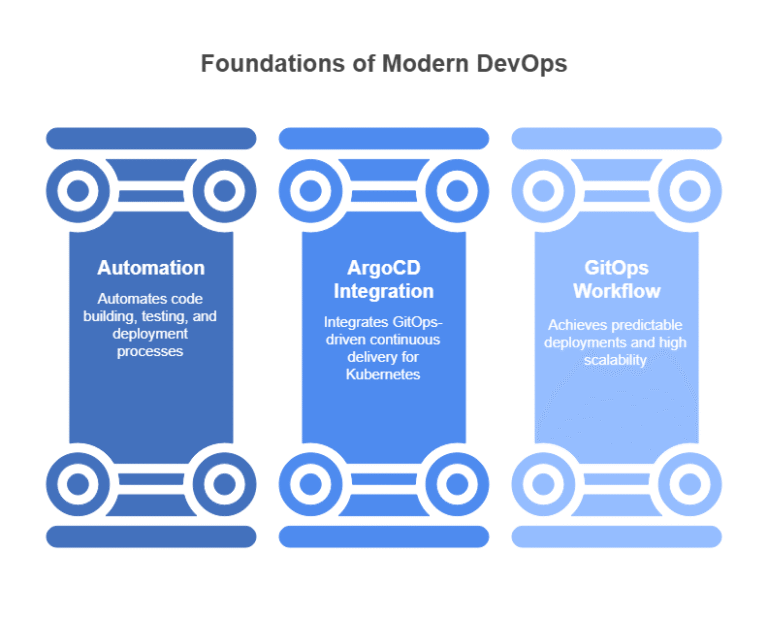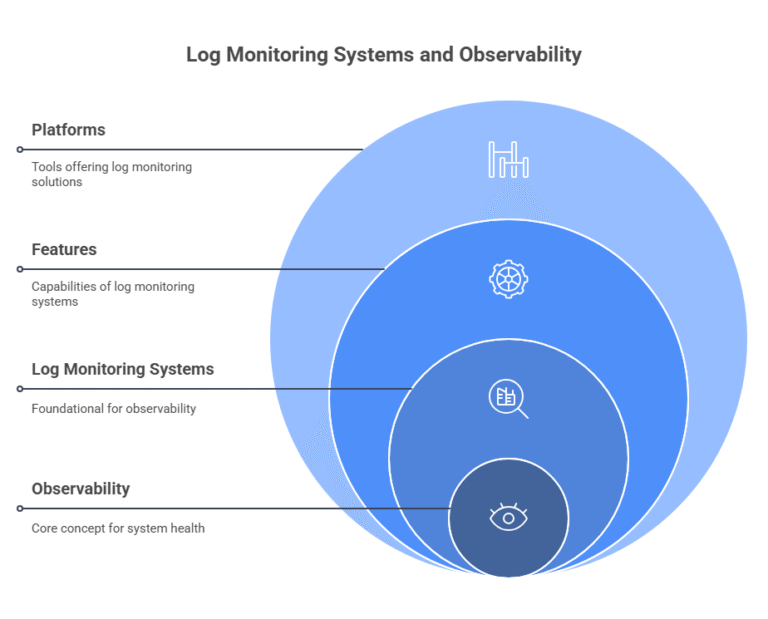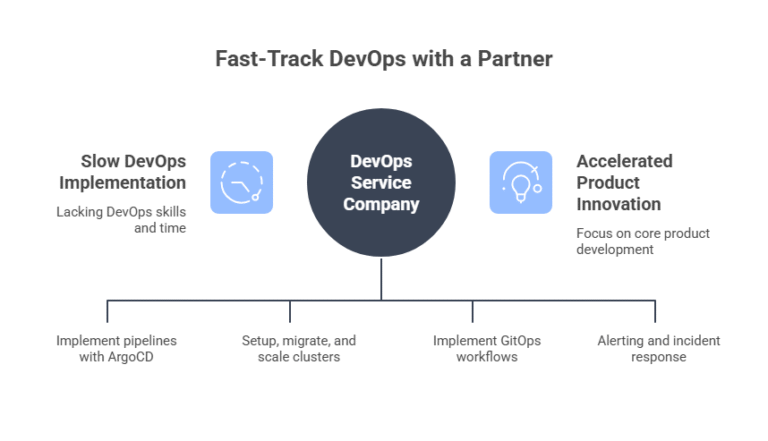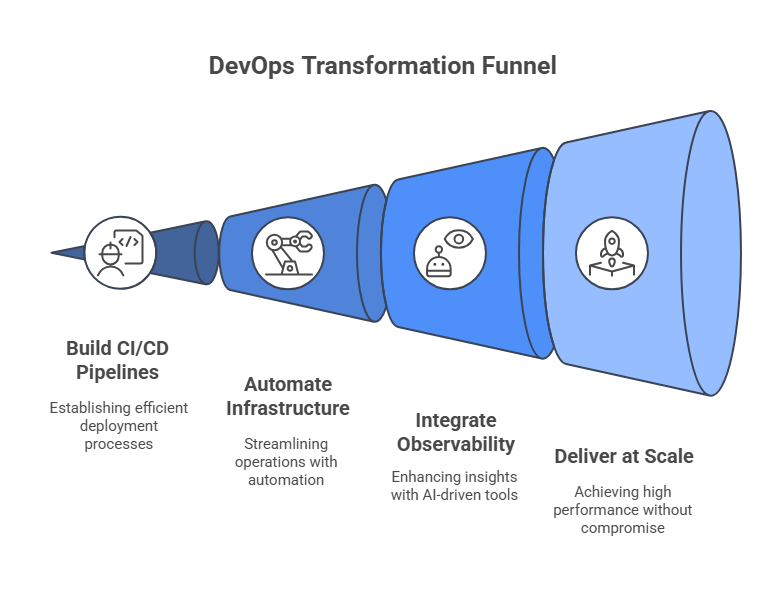The Future is Now: Must-Know DevOps Technologies for Scalable Growth
In a world where digital speed defines competitive advantage, DevOps technologies are the driving force behind faster releases, fewer failures, and scalable infrastructure. For startups and enterprises alike, modern DevOps isn’t just about automation—it’s about delivering resilient, intelligent systems that evolve with your business.
This blog explores the most impactful DevOps technologies for 2025 and how they contribute to scalable, secure, and smart software delivery.

1. Modern CI/CD Pipelines: Automation for Faster Delivery
At the heart of high-performing DevOps teams lies a well-architected CI/CD (Continuous Integration and Continuous Deployment) pipeline. These pipelines enable developers to build, test, and deploy code automatically, resulting in faster time to market and fewer bugs in production.
CI/CD Pipelines with ArgoCD: GitOps-Driven Deployment for Kubernetes
One of the most powerful innovations today is the implementation of CI/CD pipelines with ArgoCD. ArgoCD is a GitOps-based continuous delivery tool designed specifically for Kubernetes. It allows teams to manage deployments by using Git repositories as the single source of truth.
Benefits of CI/CD Pipelines with ArgoCD:
- Automates syncing between Git and Kubernetes clusters
- Offers real-time application status and health monitoring
- Enables safe, auditable rollbacks
- Simplifies Kubernetes management through declarative configurations
By combining a traditional CI tool (e.g., Jenkins, GitHub Actions, GitLab CI) with ArgoCD for continuous delivery, teams achieve a complete, automated GitOps workflow. This results in predictable deployments, better visibility, and high scalability.
2. AI-Driven DevOps: From Reactive to Predictive
As systems become more complex, DevOps teams are turning to AI-driven tools to automate monitoring, testing, incident detection, and even remediation.
What DevOps AI Tools Bring to the Table
Modern DevOps AI tools use machine learning and anomaly detection to:
- Identify performance degradation before users are affected
- Suggest optimizations based on usage trends
- Automate root cause analysis (RCA) across microservices
- Reduce alert fatigue through intelligent noise filtering
Tools like Moogsoft (for AIOps), Harness (for AI-based deployment verification), and LLM-based copilots are redefining efficiency. AI helps organizations transition from reactive to predictive DevOps, reducing downtime and accelerating delivery.

3. Log Monitoring Systems: Observability as a First-Class Citizen
Observability is essential in today’s distributed systems, and log monitoring systems are foundational to it. Without them, diagnosing failures and performance bottlenecks becomes guesswork.
Features of Modern Log Monitoring Systems:
- Centralized log aggregation from all services
- Custom alerts based on log patterns
- Real-time dashboards and visualizations
- Seamless integration with metrics and traces
Platforms like ELK Stack, Grafana Loki, Datadog, and New Relic offer powerful insights into system behavior. A strong log monitoring strategy helps teams proactively detect issues, improve incident response, and ensure compliance.
4. Kubernetes and Cloud-Native Architecture
Kubernetes is now the backbone of scalable DevOps architectures. It enables container orchestration, autoscaling, and self-healing infrastructure—all crucial for modern cloud-native applications.
Kubernetes + GitOps = Maximum Efficiency
When integrated with CI/CD pipelines with ArgoCD, Kubernetes becomes even more powerful. This combination provides:
- Declarative deployments tracked in Git
- Infrastructure as code for both app and infra
- Safe rollback and drift detection
- Scalable microservices management
With this approach, DevOps teams maintain complete control, visibility, and traceability across environments—local, hybrid, or multi-cloud.
5. Infrastructure as Code (IaC): Automate Everything
In a DevOps-driven world, provisioning infrastructure manually is inefficient and error-prone. That’s why Infrastructure as Code (IaC) has become a standard practice.
Leading IaC Tools Include:
- Terraform: Multi-cloud provisioning and reusable modules
- Pulumi: Supports general-purpose programming languages
- AWS CDK: Great for AWS-native infrastructure coding
IaC works best when integrated into CI/CD pipelines with ArgoCD, ensuring both applications and infrastructure are deployed automatically, tracked via Git, and version-controlled. This alignment delivers true GitOps at scale.
6. Security First: The Rise of DevSecOps
Security breaches can derail even the most successful digital businesses. With DevSecOps, security is built into every stage of the software development lifecycle—from code to cloud.
DevSecOps Tools to Know:
- Code Analysis: SonarQube, Semgrep
- Container Scanning: Trivy, Aqua Security
- Secret Management: HashiCorp Vault, Doppler
- Policy Enforcement: OPA, Kyverno
By integrating these tools into your pipeline, you ensure security checks are automated and consistent. For organizations working in regulated industries, this is not just a best practice—it’s a must.
7. Unified DevOps Platforms: Less Complexity, More Velocity
Managing a sprawl of disconnected tools is one of the top challenges in DevOps today. That’s why businesses are shifting to unified platforms that combine CI/CD, monitoring, infrastructure automation, and security.
Benefits of a Unified DevOps Platform:
- Seamless integration of CI/CD pipelines with ArgoCD
- Single pane of glass for observability and incident response
- Policy-based access control for governance
- Simplified onboarding for new developers
Solutions like GitLab, Azure DevOps, and custom Kubernetes platforms are enabling teams to scale faster and collaborate better—without sacrificing control.

8. Why Work with a DevOps Service Company
Implementing an advanced DevOps stack requires time, skill, and domain expertise. A trusted DevOps service company can fast-track this journey.
What a DevOps Partner Brings:
- Design and implementation of CI/CD pipelines with ArgoCD
- Kubernetes cluster setup, migration, and scaling
- Infrastructure as code and GitOps workflows
- 24/7 monitoring, alerting, and incident response
By working with experts, your team can focus on product innovation, while your partner ensures uptime, security, and scalability behind the scenes.
9. Future Trends in DevOps Technologies
The DevOps ecosystem is rapidly evolving, and future-ready organizations are already embracing the next wave of innovation:
- NoOps: Fully automated environments with minimal human intervention
- DevOps AI copilots: LLM-based assistants for daily DevOps tasks
- Edge-native DevOps: Supporting edge computing use cases
- Internal Developer Platforms (IDPs): Self-service environments for developers
As these technologies mature, they will redefine how businesses approach software delivery and infrastructure management.

Conclusion: Scale Smarter with DevSecCops.ai
To thrive in today’s competitive digital world, you need a DevOps foundation that’s agile, secure, and scalable. Whether it’s leveraging CI/CD pipelines with ArgoCD, deploying smart DevOps AI tools, or building out a robust log monitoring system, your tech stack should empower your team—not slow it down.
At DevSecCops.ai, we help companies:
- Build modern CI/CD pipelines with ArgoCD for Kubernetes
- Automate infrastructure and shift left on security
- Integrate observability and AI for smarter operations
- Deliver at scale with zero compromise on speed or security
🔧 Ready to take your DevOps to the next level?
Visit DevSecCops.ai—your partner for intelligent, scalable, and secure DevOps transformation.
